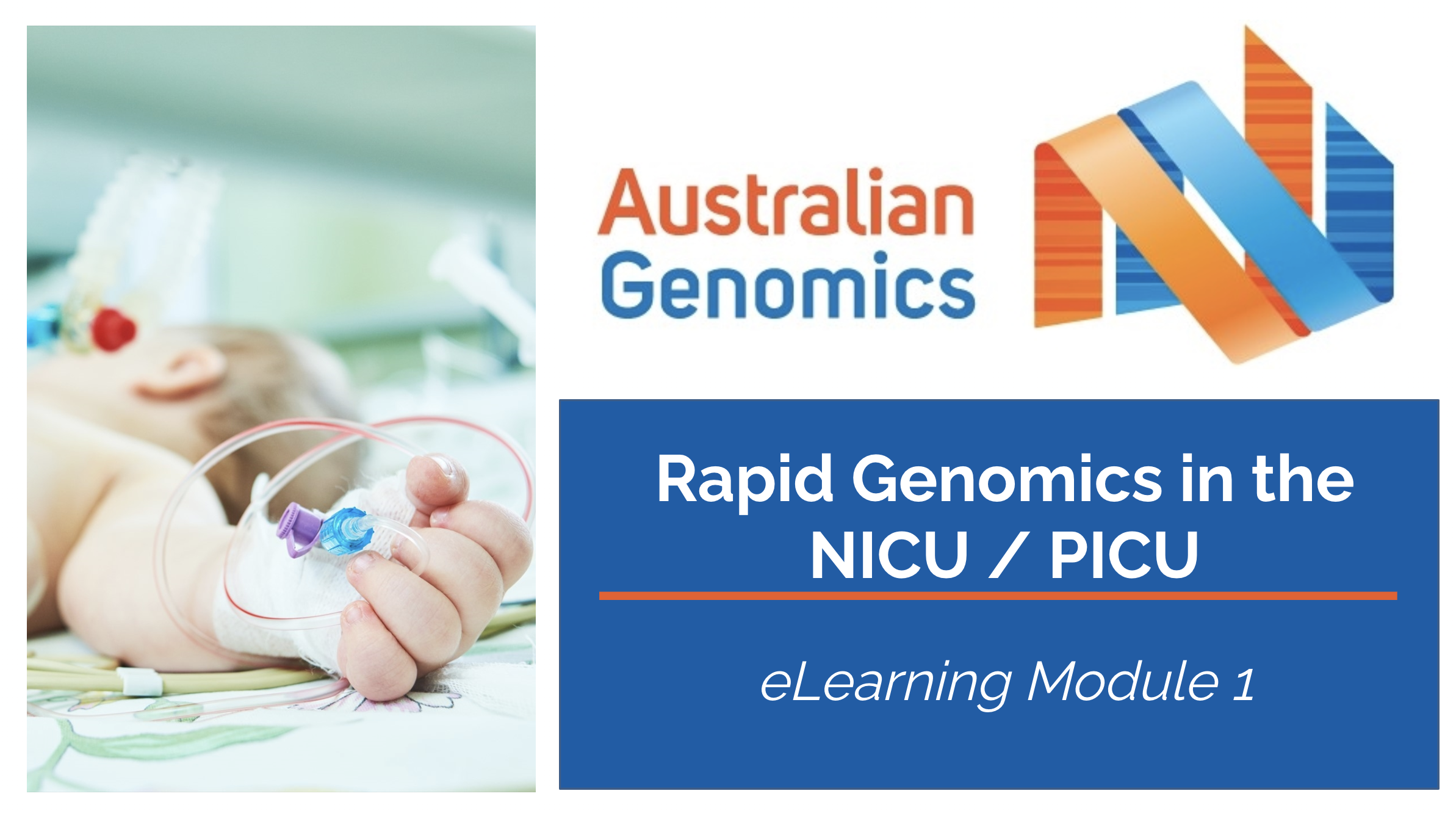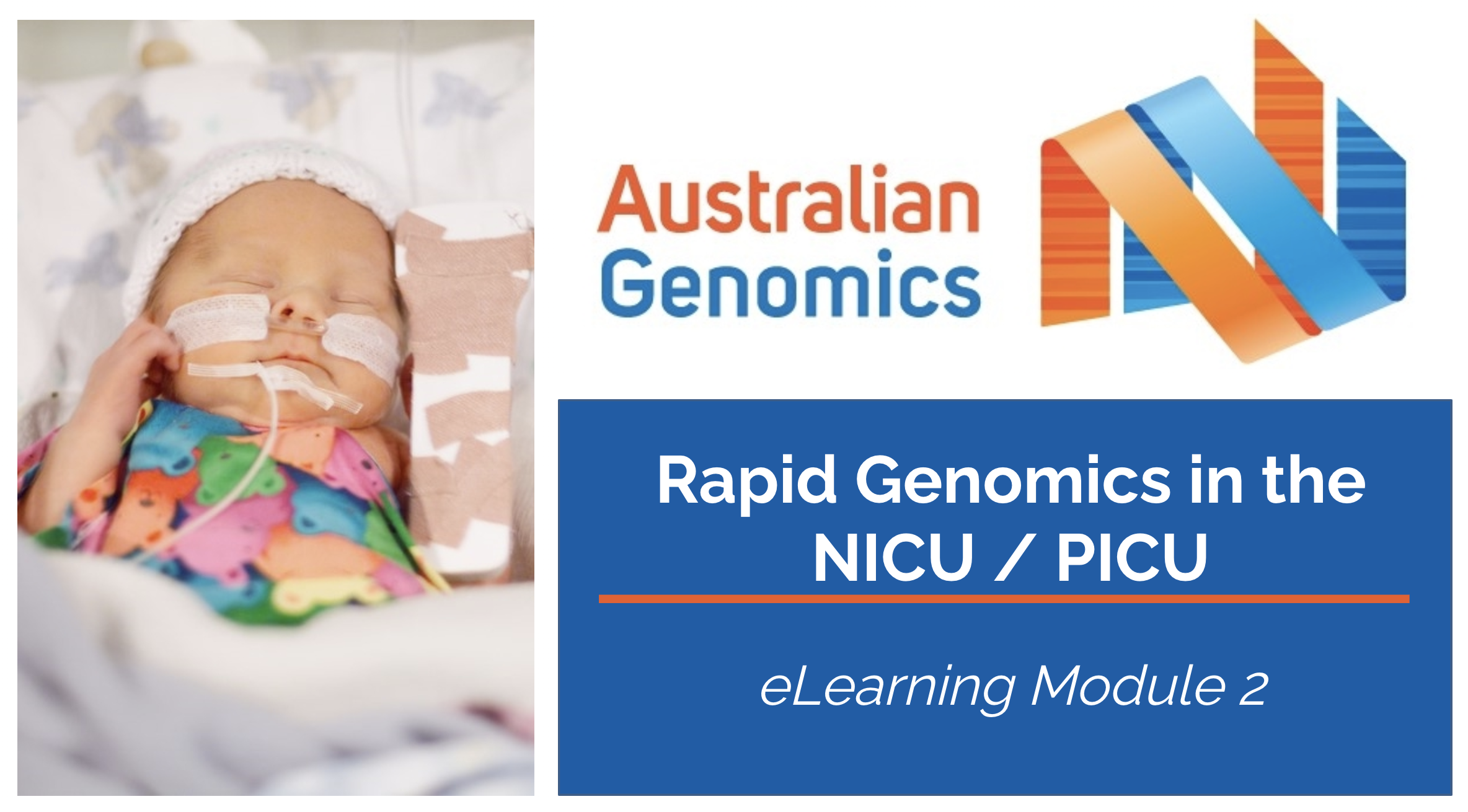In 2021, the Acute Care Genomics flagship delivered a comprehensive online education program. Case-based learning principles were applied across online modules and a virtual workshop, with content tailored to a non-genetics audience.
Feedback from the education program highlighted the value of the online modules:
“The pre-learning modules were EXCELLENT and I am recommending them to all of my colleagues.”
“Your training modules were invaluable.”
“…the pre-learning was incredibly well made and I enjoyed it immensely”
The modules have been modified for use beyond the study, and can be accessed below.
Basic genomics quiz
Before you get started, let’s see how much you know about genomics. Click on the icon below to take a short quiz.
![]()
If you would like to learn more about genomics before moving on to the modules, we’ve included some helpful resources below:
• Clinical Genomics: Background Biology
• What is Genomic Medicine
• DNA, genes and genomes
• DNA and your health: gene differences, diagnosis and risk
• The testing pathway
eLearning Module 1
eLearning Module 2
Case library
Acknowledgements
The content from these modules was developed for the Acute Care Genomics Program, which was funded by the Medical Research Futures Fund, Genomics Health Futures Mission (GHFM76747).
This content incorporates educational expertise from Melbourne Genomics. Additional content was contributed by Professor Zornitza Stark, Dr Chirag Patel, Professor John Christodoulou, Giulia McCorkell, Donna Halton, Dr Amy Nisselle, Dr Fran Maher, Sophie Bouffler, Dr Sarah Sandaradura, Ivan Macciocca, Professor Clara Gaff, Elly Lynch, Gemma Brett, Dr Michelle de Silva, and Dr Fiona Lynch. Thanks also to Associate Professor Belinda McClaren, Kirsten Boggs, Associate Professor Stephanie Best and Dr Melissa Martyn.
Stock images have been purchased for educational purposes or are licensed under a Creative Commons Attribution 4.0 license. All other audio, video, text, graphics and logos have been made and developed by the Australian Genomics Acute Care Flagship.
Reproducing or distributing these materials without the written permission of Australian Genomics is prohibited.
Contact
Sophie Bouffler













